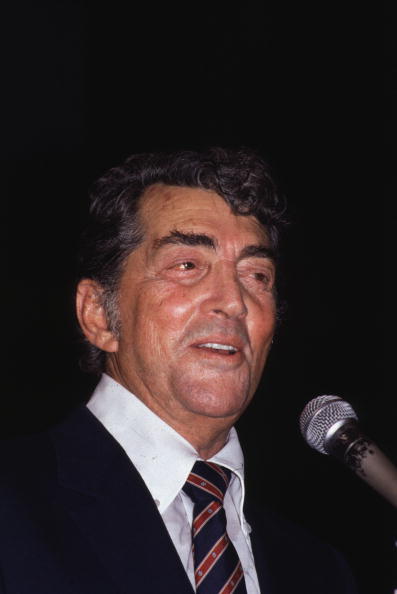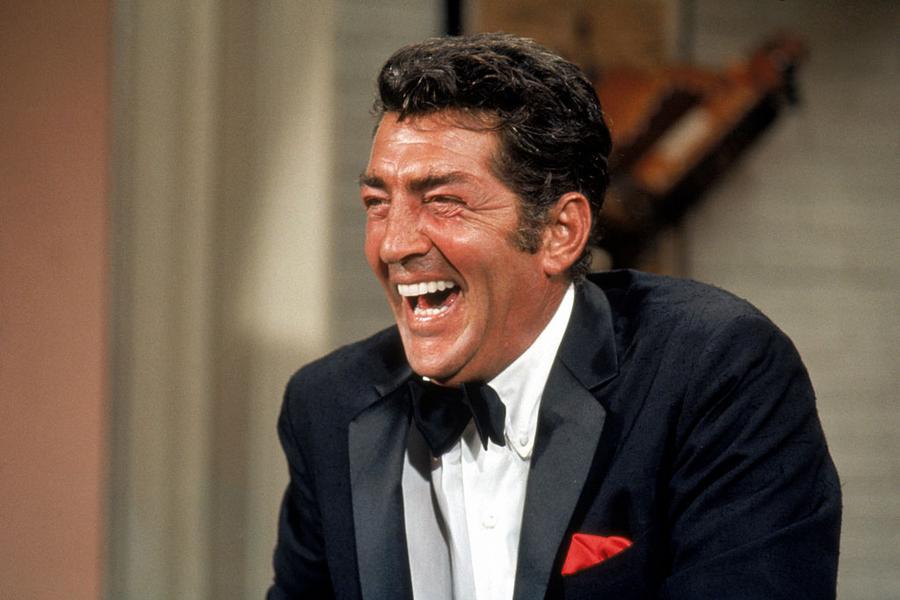What Was Dean Martin's Net Worth?
Dean Martin was an American singer, actor, and comedian who had a net worth of $30 million at the time of his death in 1995. That's the same as around $65 million in today's dollars after adjusting for inflation.
Known as "The King of Cool," Dean Martin achieved remarkable success in music, film, television, and Las Vegas entertainment. His smooth voice, effortless charisma, and dry humor made him a defining figure of midcentury American show business. Over a five-decade career, he evolved from nightclub crooner to movie star to television icon, maintaining an image of relaxed sophistication that few have ever matched.
Martin first gained national fame in the 1940s as one half of the comedy duo Martin and Lewis alongside Jerry Lewis. The pair became sensations for their unpredictable nightclub act and went on to star in a series of hit films, including "My Friend Irma," "The Stooge," and "Artists and Models." Their partnership ended in 1956 after a decade of enormous success, with both men pursuing solo careers.
After the split, Martin reinvented himself as a solo recording artist and actor. He scored major musical hits with songs such as "That's Amore," "Volare," and "Everybody Loves Somebody," the latter of which famously knocked The Beatles off the top of the charts in 1964. In Hollywood, he proved his dramatic and comedic range in films like "The Young Lions," "Rio Bravo," "Some Came Running," and the "Matt Helm" spy series.
In the 1960s and 1970s, Martin became a central member of Frank Sinatra's Rat Pack, performing alongside Sinatra and Sammy Davis Jr in iconic stage shows and the film "Ocean's 11." His long-running NBC variety series "The Dean Martin Show" and its spinoff, "The Dean Martin Celebrity Roast," cemented his television legacy. Even after stepping away from the spotlight in the 1980s, Martin remained an enduring symbol of effortless charm and old-school Hollywood cool.
Early Life
Dean Martin was born Dino Paul Crocetti on June 7, 1917, in Steubenville, Ohio. His father was a barber and originally from Italy, and his mother was also of Italian descent. He grew up speaking Italian and began to learn English at the age of five after enrolling at Grant Elementary School in Steubenville. Dean's broken English made him a target for bullying. When he was a teenager, he started playing the drums, and he dropped out of Steubenville High School in his sophomore year because he felt he was smarter than his teachers. After leaving school, he worked various odd jobs, including at a steel mill, at a speakeasy, as a bootlegger, as a blackjack dealer, and as a welterweight boxer. When Martin was 15, he boxed under the name "Kid Crochet." Around this time, he moved to New York City and shared an apartment with Sonny King, who was also trying to begin his career in show business. Both had little money and would charge people to watch them bare-knuckle box in their apartment. Martin quit boxing once he got a job as a roulette stickman at an illegal casino, and at this time, he began singing with local bands under the name "Dino Martini." He got his break when he joined the Ernie McKay Orchestra, and by 1940, he had begun singing for the Sammy Watkins Orchestra. Watkins encouraged him to change his name to "Dean Martin," and Dean heeded his advice and remained with the group until May 1943. In the fall of that year, he left to begin performing in New York.
Martin & Lewis
In 1945, Martin met comedian Jerry Lewis at the Glass Hat Club. A year later, the two debuted on stage in Atlantic City when the scheduled singer didn't show up, and Lewis suggested Martin as a replacement. When the two first began performing together, they did not receive positive reviews from the audience, and the owner told them he would cancel their contract unless they improved. They had been using scripted material, but started to improvise with Martin singing and Lewis bumbling around like a fool. They performed lighthearted slapstick and vaudeville comedy and were much more popular with crowds. The duo's success in Atlantic City led to jobs elsewhere, including a run at New York's Copacabana Club.
Although their acts were popular and they had been making the rounds at clubs on the East Coast, the pair was still relatively unknown. In 1949, they gained traction after appearing in the comedy musical film "My Friend Irma." Their performance caught the eyes of NBC executives, who then approached the pair about being on a comedy radio show. NBC Radio Network spent around $400,000 in preproduction for the show and offered them a five-year contract and a $150,000 salary. The network's preproduction cost was the modern equivalent of $4.4 million, and Martin and Lewis' salary would be the equivalent of $1.6 million. Despite NBC's investment in the show, the duo's comedy was visually oriented, and it didn't translate as well on the radio. They nevertheless received lucrative sponsorships from Chesterfield Cigarettes and Anacin, a pharmaceutical company. In 1950, the pair made their television debut on "The Colgate Comedy Hour," and they appeared in 16 films together from the years 1949 and 1956. Creative differences and diverging goals led the pair to part ways in 1956.

Keystone/Hulton Archive
Solo Career
In 1957, Martin appeared in his first film without Lewis, titled "Ten Thousand Bedrooms," but it was a commercial flop. The next year, he appeared with Marlon Brando and Montgomery Clift in the war drama "The Young Lions," which was praised by critics. Also in 1958, Dean starred alongside Frank Sinatra in the drama film "Some Came Running," which was nominated for several Academy Awards. During this time, he was working to make a name for himself as a dramatic actor and was very successful in that capacity. By the mid-1960s, he had appeared in films including "Artists and Models," "Robin and the 7 Hoods," "Ada," and "Ocean's 11." He continued to build on his singing career, and in 1965, he got his own variety television show. "The Dean Martin Show" ran from 1965 to 1974 and earned him a Golden Globe Award for Best Actor in a Television Series Musical or Comedy in 1966.
Martin, Frank Sinatra, Sammy Davis Jr., Peter Lawford, and Joey Bishop formed the Rat Pack, which wasn't so much a formal group as a name for a group of friends who frequently appeared in film and performed together. They were well-known for their shows in Las Vegas. Lawford was dropped in favor of Humphrey Bogart in 1964. The group grew apart in the 1970s, but in 1987, Sinatra, Davis, and Martin reunited for a 29-date comedy tour.

(Photo by Martin Mills/Getty Images)
Personal Life and Death
Martin's first marriage was in 1941 to Elizabeth Anne McDonald, and after four children together, they divorced in 1949. He married Dorothy Jean Biegger later in 1949, and they had three children and divorced in 1973. His final marriage was to Catherine Hawn, and the marriage lasted three years.
Dean had smoked heavily throughout his life and was diagnosed with lung cancer in September 1993. He was given the option to undergo surgery that would prolong his life, but refused. In early 1995, he stopped appearing in public, and he died of respiratory failure on Christmas Day in 1995 at the age of 78. In 1997, Ohio Route 7, which passes through his hometown, was renamed Dean Martin Boulevard in his honor.
Real Estate
In the 1970s, Dean paid $120,000 for a property in Beverly Hills. Over time, he expanded the home's footprint to 12,000 square feet. Three years after his death, in 1995, the home was sold for $1.35 million. In 2003, the home was sold for $2 million. A buyer eventually tore Dean's home to the ground and built an extravagant modern mansion on the lot. This owner has attempted to sell the home for $28 million in recent years.
Martin also had a mid-century modern home in Palm Springs. His estate sold this property in 1996 for $205,000.
/2021/02/Dean-Martin.jpg)
/2019/08/jb.jpg)
/2010/09/Jerry-Lewis.jpg)
/2023/09/peter.png)
/2014/07/lola.jpg)
/2020/07/frank-sinatra.jpg)
:strip_exif()/2009/09/P-Diddy.jpg)
/2017/02/GettyImages-528215436.jpg)
/2020/04/Megan-Fox.jpg)
/2020/01/lopez3.jpg)
/2019/11/GettyImages-1094653148.jpg)
/2020/02/Angelina-Jolie.png)
/2009/09/Brad-Pitt.jpg)
/2020/06/taylor.png)
:strip_exif()/2015/09/GettyImages-476575299.jpg)
/2009/09/Cristiano-Ronaldo.jpg)
/2009/09/Jennifer-Aniston.jpg)
/2021/02/Dean-Martin.jpg)
/2020/07/frank-sinatra.jpg)
/2019/08/jb.jpg)
/2014/08/Sammy-Davis-Jr.jpg)
/2010/09/Jerry-Lewis.jpg)
/2021/05/Don-Rickles.jpg)
/2019/01/jack-benny.jpg)
/2019/10/denzel-washington-1.jpg)
/2019/04/rr.jpg)
/2009/11/George-Clooney.jpg)